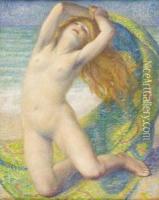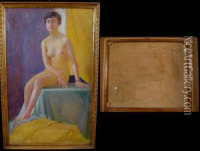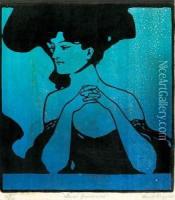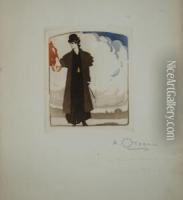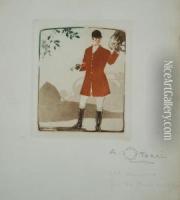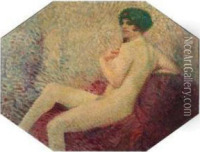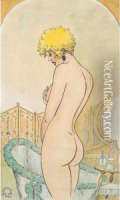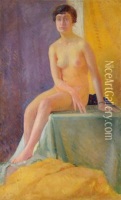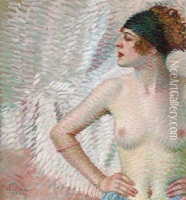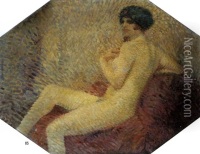Aleardo Terzi Paintings
Aleardo Terzi was an Italian artist and illustrator, renowned for his distinctive posters, illustrations, and graphic design work that captured the spirit of the early 20th century. Born on January 24, 1870, in Palermo, Italy, Terzi's artistic journey began at a young age under the influence of his vibrant cultural surroundings and the burgeoning Art Nouveau movement, which he would later infuse into his own unique style.
Terzi's education in art took a significant step forward when he attended the Brera Academy in Milan, where he honed his skills in painting and drawing. His early career was marked by a variety of artistic endeavors, including book illustrations, which showcased his ability to bring stories to life through visual imagery. However, it was his work in poster art and advertising that truly set him apart and made his name synonymous with the Art Nouveau movement in Italy.
Throughout his career, Terzi collaborated with numerous companies and organizations, creating memorable posters that were not only advertisements but also works of art. His ability to blend vivid colors, elegant lines, and dynamic compositions made his posters highly effective as marketing tools and beloved by the public. Terzi's work often featured themes of beauty, nature, and modernity, reflecting the optimism and technological advancements of the era.
One of Terzi's most significant contributions to the art world was his role in the development of modern graphic design in Italy. He was a pioneer in understanding the importance of visual communication in advertising and was among the first in Italy to elevate commercial artwork to a form of high art. His innovative approach to design and typography influenced a generation of artists and designers, helping to establish a visual language that would define Italian graphic design for years to come.
Aleardo Terzi's legacy extends beyond his beautiful posters and illustrations. He played a crucial role in bridging the gap between traditional art and commercial design, showcasing how art could be applied in everyday life and business. Despite passing away on April 23, 1943, in Milan, Terzi's work continues to be celebrated for its artistic merit and historical significance, embodying the creativity and spirit of an era that sought to marry beauty with function.

